Tick Canyon Geology
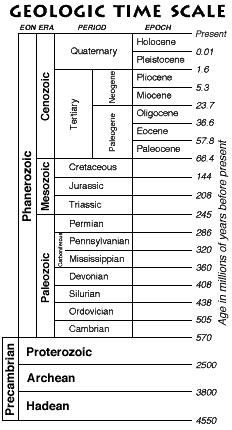 |
The main formations in Tick Canyon (from the mouth to the head) are the Mint Canyon formation, the Tick Canyon formation, the Vasquez formation, and a basement complex.
The Mint Canyon formation (middle Miocene) consist of terrestrial deposits from streams and lakes consisting mostly of sandstone and conglomerate with some claystone. Verterate fossils have been found in the Mint Canyon formation aiding in the dating of the formation.
The Tick Canyon formation is lower Miocene, older than the Mint Canyon formation. It was deposited on land mostly by streams and consists of sandstone, conglomerate, and claystone. Based on field observations, some geologists (see Ehlert, 2003, in sources) believe that the Tick Canyon formation is not a true formation and is really the basal (lowest or oldest) part of the Mint Canyon formation. The contact between the Mint Canyon formation and Tick Canyon formation has always been difficult to describe leading to this conclusion. Vertebrate fossils have also been found in this formation (see Jahns, 1940, in the thesis section below).
The Vasquez formation is Oligocene in age. Due to the faulting, the dips can be as great as 80 degrees - nearly vertical, especially around the borax mine. It was also mainly deposited on land and consists of sandstone, claystone, fanglomerate (alluvial fan deposits - especially noticeable at Vasquez Rocks park), and some lake deposits of shale. There are also basalt and andesite flows north of Davenport Road. The Vasquez formation was named for the outlaw Tiburcio Vasquez (1835-1875) who supposedly used the rocks as a hiding place.
In the upper reaches of the canyon, there is a Precambrian crystalline basement complex consisting of schists and gneiss intruded by granitic rocks.
Tick Canyon is famous as the location of the Sterling Borax Mine. The borax ore mineral colemanite was discovered here in late 1907 and the mine produced from 1908 to 1921. It is located just to the north of of Davenport Road and with dumps on both sides of the road. The borate deposites probably originated in hot springs associated with late Oligocene and early Miocene volcanic activity in the area. The hot springs flowed into the lake deposites of the Vasquez formation. Howlite, another borate mineral, was also found along with the colemanite. However, as a poor ore of borax, it was just waste material and ended up in the mine dumps. It is only useful to rockhounds to make decorative objects. Many other minerals have been found in the dump.
Less well known are the gold mines in the upper canyon area. There is very little documentation on these mines. Here are three claims reported by Oakeshott (1958, p. 129 - see sources). Several thousand dollars in gold, and some silver, were produced from 1920-38 from an old Spanish mine. The mine consisted of several hundred feet of workings including 4 adits and 2 shafts. It is not known when this mine was first worked, but miners probably started searching the canyon after 1853, when the Williamson railroad survey expedition traveled through Soledad Canyon. Another claim (Toney) consisted of quartz veins in gneissoid granite rocks. A 40-foot shaft was dug by A.R. Toney (deceased) about 1937. The mine did not produce. The largest claim was the Utopia (Champion, Dietzman, Enterprise, or Shepherd were other names). It consisted of 4 parallel quartz veins 2-4 feet wide in gneissoid biotite-muscovite granite. Assays of 0.55 ounce gold per ton were reported. There were 5 lode claims continuous with Spanish claims. There were about 1000 to 1200 feet of tunnels and several hundred feet of shafts.
Shepherd and Ebinger, who found the Sterling Borax Mine, were both involved with the gold mines. At one time, Shepherd was the claim name for one of the gold mines in Tick Canyon (other claim names for that mine were Utopia, Champion, Dietman, and Enterprise). The Los Angeles Herald of September 15, 1897, states that "L. Ebinger was sold a 1/4 interest in the Lottie and Sousa Mines in Tick Canyon." The Los Angeles Times of April 19, 1903, states that "A N Ransdell and MA Ransdell to Louis Ebinger, the Spanish mine on Champion Hill, Tick Canyon, $300."
Several thousand dollars worth of gold was produced before World War I. In 1953, the claim was under lease for the production of graphite. This was evidently the claim that Shepherd was working before he discovered the colemanite in 1907. These claims were all in the upper reaches of Tick Canyon north of the borax mine in the fault and shear zones of the crystalline basement complex.
Numerous zeolites (such as analcime and natrolite) have been found in the basalt cavities. Zeolites are a rare, important group of minerals used in industry. Agate has also been found in the basalt outcrops around the dump area, although it is rare now.
The geology in the Tick Canyon area has been mapped for years by students, although not very much anymore. Students at Pasadena City College were mapping the mine area by the late 1920's. Probably students from all the colleges in the Los Angeles area mapped the area at one time or another. Here are some links to thesis available on the internet from Caltech:
Geology of Tick Canyon by Ygnacio Bonillas, 1933
Geologic Report on a Portion of the Lang Quadrangle by Clay Smith, 1938
Stratigraphy of the easternmost Ventura Basin, California, with a description of a new lower miocene mammalian fauna from the Tick Canyon formation by Richard Jahns, 1943
Geology of the Mint Canyon Area by William Holser, 1946
Geology of the Upper Tick Canyon Area by Albert Hedden, 1948
Geology of the Upper Tick Canyon Area by Joseph Birman, 1950
Vasquez series in the Upper Tick Canyon Area by William Irwin, 1950
Geology of the Upper Tick Canyon Area by Carel Otte, Jr., 1950

Tick Canyon drains into the Santa Clara River on the east side of Highway 14 at Shadow Pines Blvd. near Lang. It heads north through the Pinetree housing tract. The Mint Canyon formation (middle Miocene) is indicated on this map as Tmc and Tmcv.
Map from the "Geologic Map of the Mint Canyon Quadrangle" (DF-57) by Thomas W. Dibblee, Jr., 1996. Dibblee geologic maps can be purchased online here.

The faulted upper Tick Canyon formations are the Mint Canyon formation (Tmcv, Tmcl, and Tmcg), the Tick Canyon formation (Ttc, Ttcg) and the Vasquez formation (Tvss, Tvb, Tva, Tvssl, and Tvcgl).
Map from the "Geologic Map of the Agua Dulce Quadrangle" (DF-58) by Thomas W. Dibblee, Jr., 1996.

The straight vertical line in the middle of the above geologic map is the A to B cross section line where A is on the bottom (south) and B is on the top (north). Here is that cross section. You can see how the dip angles in the beds change between the faults. North (to the right) of the Tick Canyon fault, the beds are almost vertical. The Sterling Borax mine is north of the Tick Canyon fault. (From Dibblee DF-58)

This early cross section of Tick Canyon at the borax mine is from the "Borax Deposites of the United States" by Charles Keyes, September 1909, from the Transactions of the American Institute of Mining Engineers, Vol. XL, Containing the papers and discussions of 1909, New York, 1910, p. 695.

This is William S. W. Kew's map from his famous USGS Bulletin No. 753 (see sources) of 1924.
His formations are (with his descriptions) [and my comments]:
Tmc - Mint Canyon formation - nonmarine buff and gray conglomerate and sandstone with variegated sandstone and clay beds; contains a vertebrate fauna of upper Miocene age. Rests unconformably on Sespe (?) formation. [The Mint Canyon formation was actually named by Kew in 1923 in Bull. 753 in 1924.]
Tsp (?) - Sespe (?) formation - Coarse sandstone and conglomerate, composed of fragments of granitic and metamorphic rocks, also hard fan conglomerates interbedded with thin layers of shale; in eastern areas lavas are interbedded or intruded at many horizons. [Note: Kew called this the Sespe formation because it was very similar in lithology to the type section of the Sespe formation in Fillmore. However, since he found no fossils, he could only tentatively call it the Sespe formation, hence the question mark. By the early 1950's, geologists were calling it the Vasquez formation. However, the Sespe and Vasquez formations are similar in age and lithology, so Kew was right in that respect.]
Tab - Andesite and basalt - Extrusive and intrusive andesite, andesite breccia, mud flows, dacite, and scoriaceous and compact basalt.
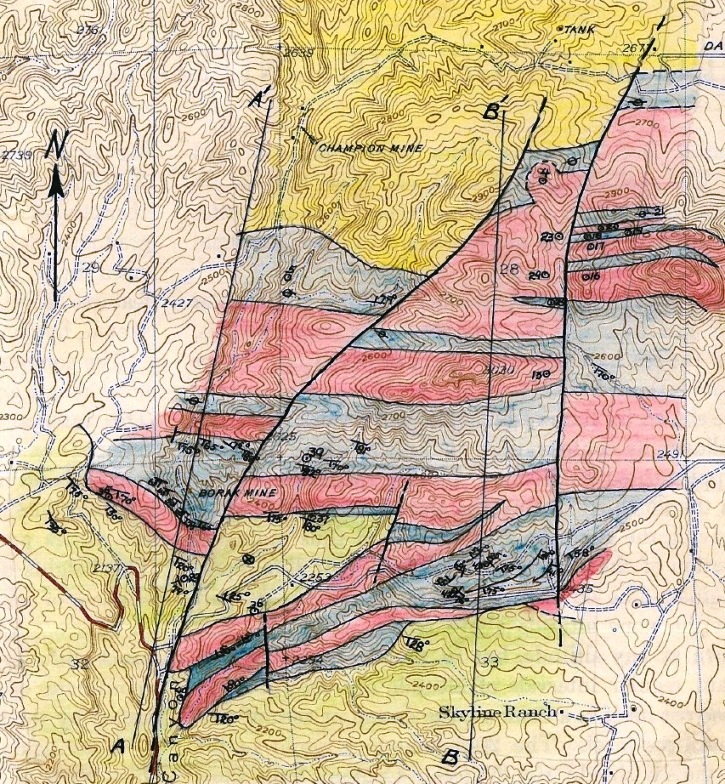
Geologic map from the Geology of Tick Canyon by Ygnacio Bonillas, California Institute of Technology, 1933. Yellow is basement complex; blue is Escondido formation (original name of Vasquez formation); red is lava; green is Mint Canyon formation
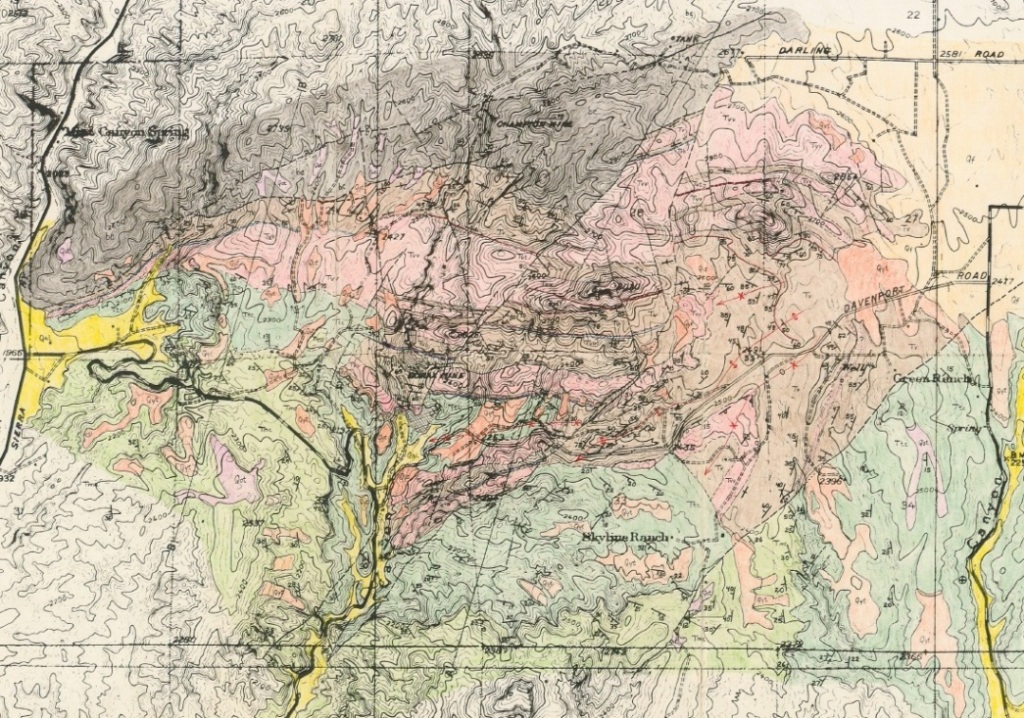
Geologic map from the Geology of the Upper Tick Canyon Area, California by Joseph Birman, California Institute of Technology, 1950. Note the route of Davenport Road on the right center of the map. This was before it was re-aligned to go just below the borax mine site through the dumps in late 1954 and early 1955. Davenport Road was originally built in 1927-28

View of Mint Canyon formation (Photo taken on 12/30/2010)
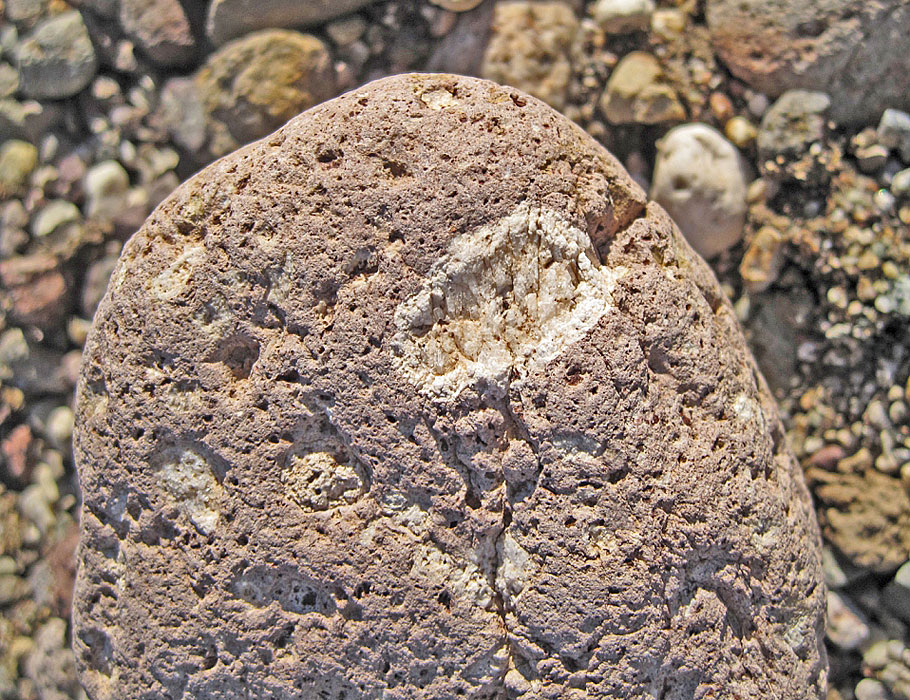
Rapakivi texture from rocks in the Mint Canyon formation in Tick Canyon (where I found this). This is an igneous porphyry rock containing potassium feldspar crystals surrounded (or mantled) by sodium feldspar in a fine-grained matrix. (12/30/2010)
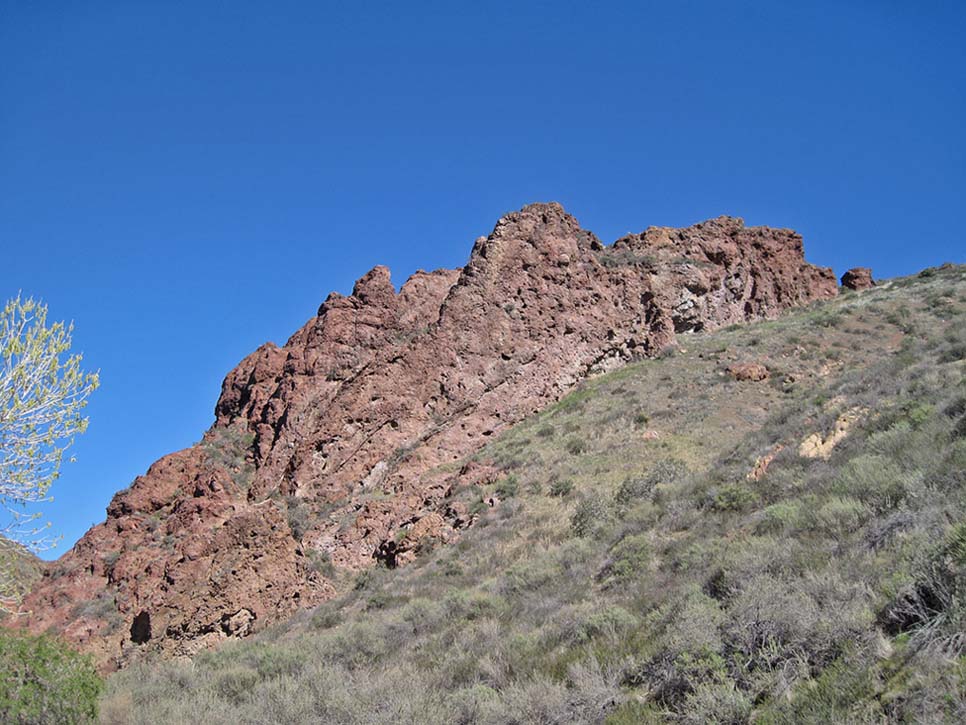
Lava flow (2/12/2011)

Nearly vertical beds (2/12/2011)

Vertical beds (1/1/2011)
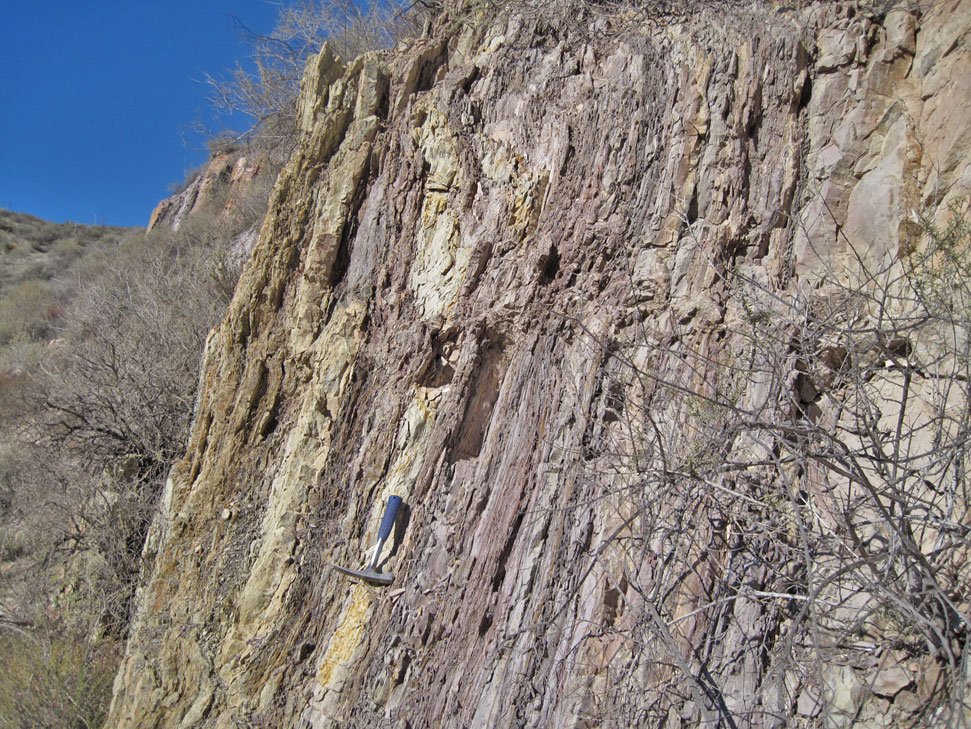
Vertical beds (1/1/2011)
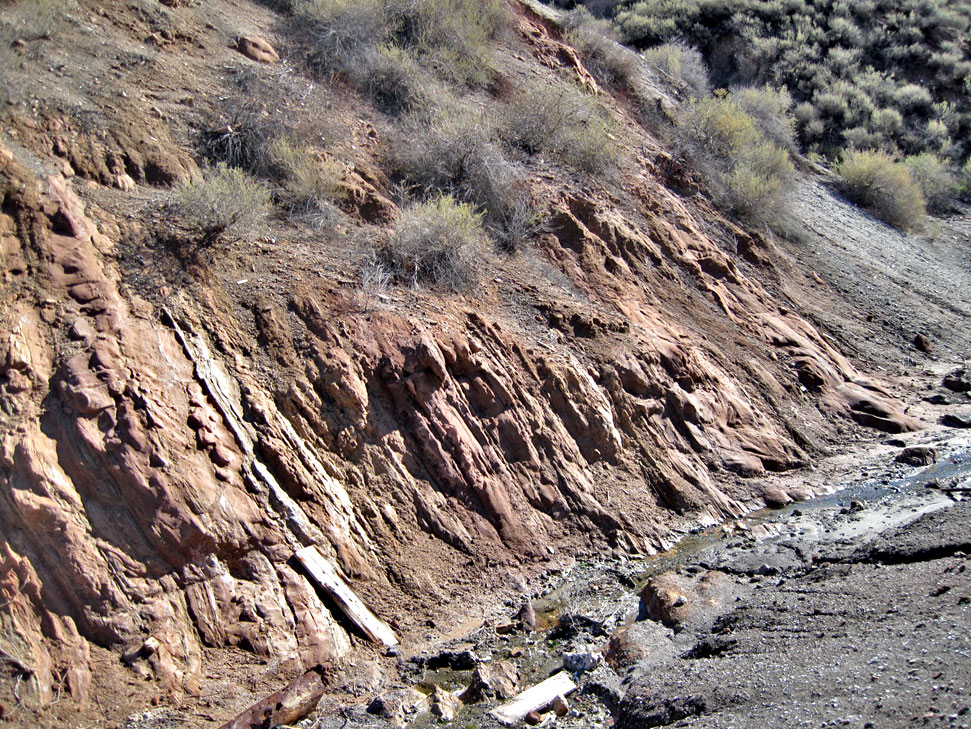
Vertical beds (1/1/2011)

Small fault (1/1/2011)
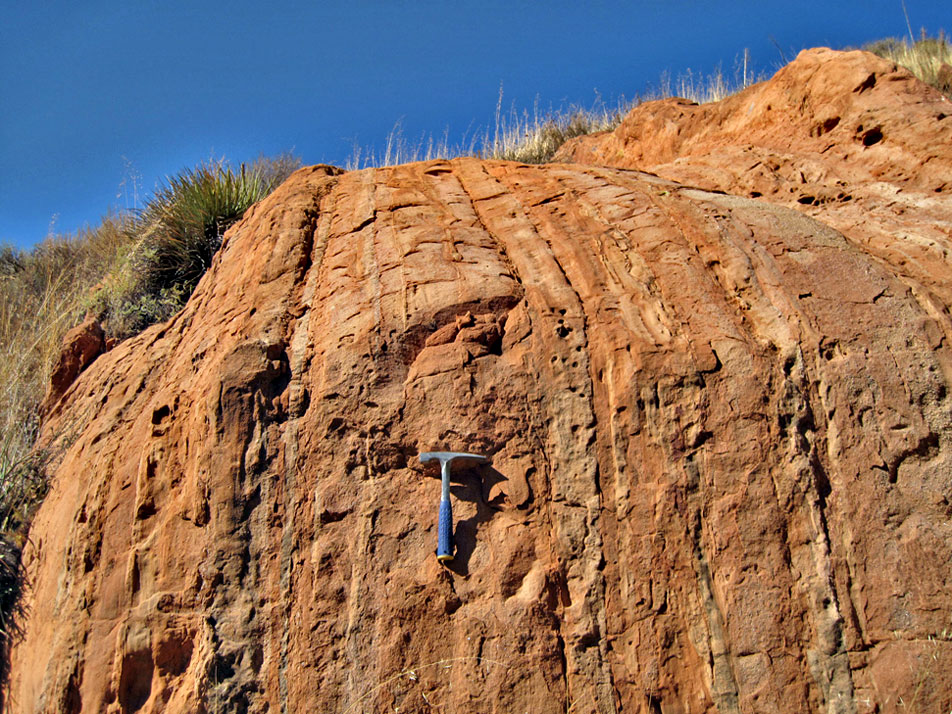
Sedimentary rocks of Vasquez formation (10/30/2011)

Mineral crystals in lava flow (10/30/2011)

More minerals in lava flow (10/30/2011)

Colemanite crystal fragment. Colemanite was named for William Coleman owner of the Harmony Borax Works mine in Death Valley where it was first found in the 1880's.
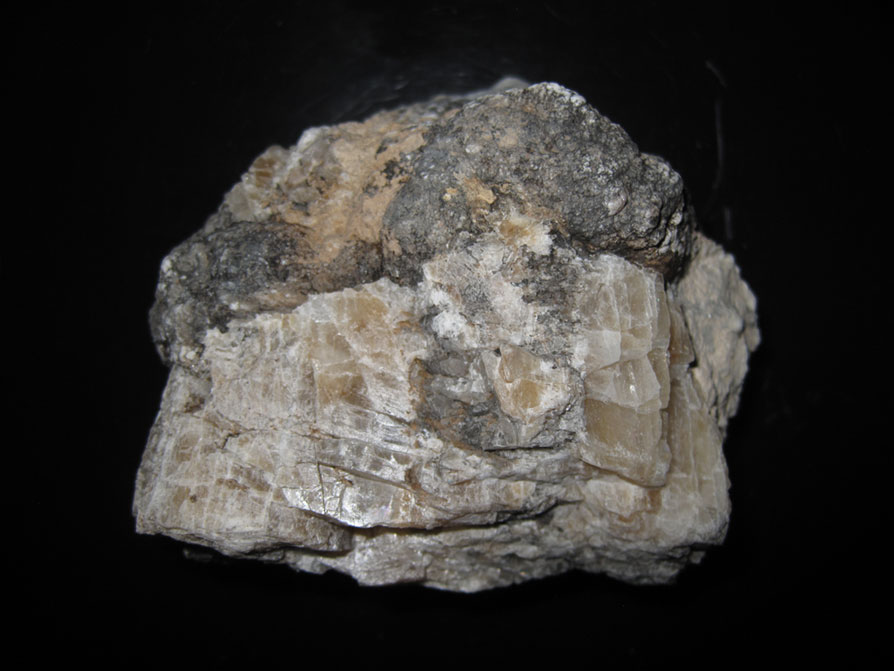
Colemanite on bottom half
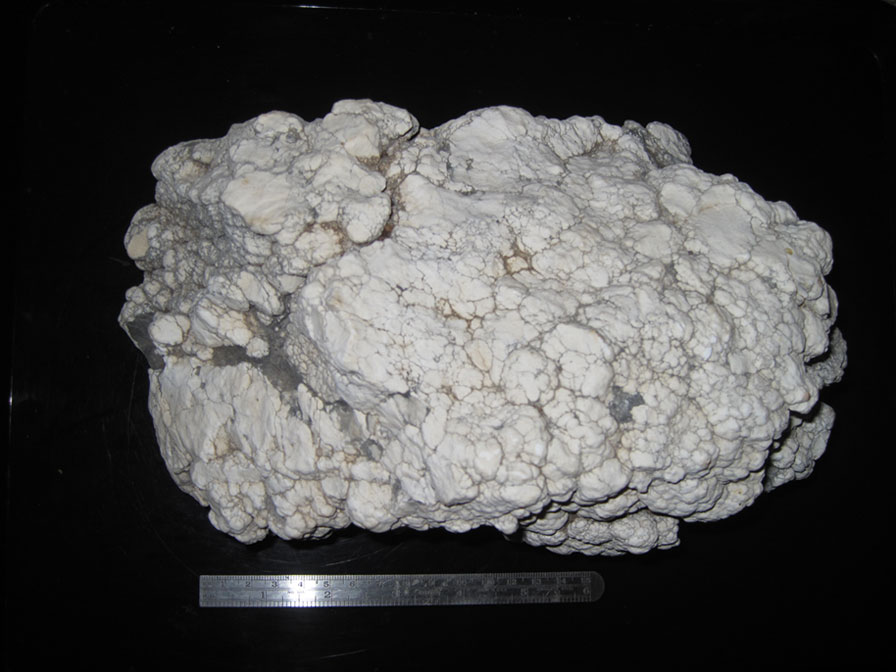
Large piece of howlite. Howlite was named for Henry How who discovered it in 1868 in Nova Scotia, Canada. Ruler is 6 inches long.

Howlite close-up showing the shale inclusions. The inclusions make a polished piece very attractive. Howlite dyed blue can look like turquoise.
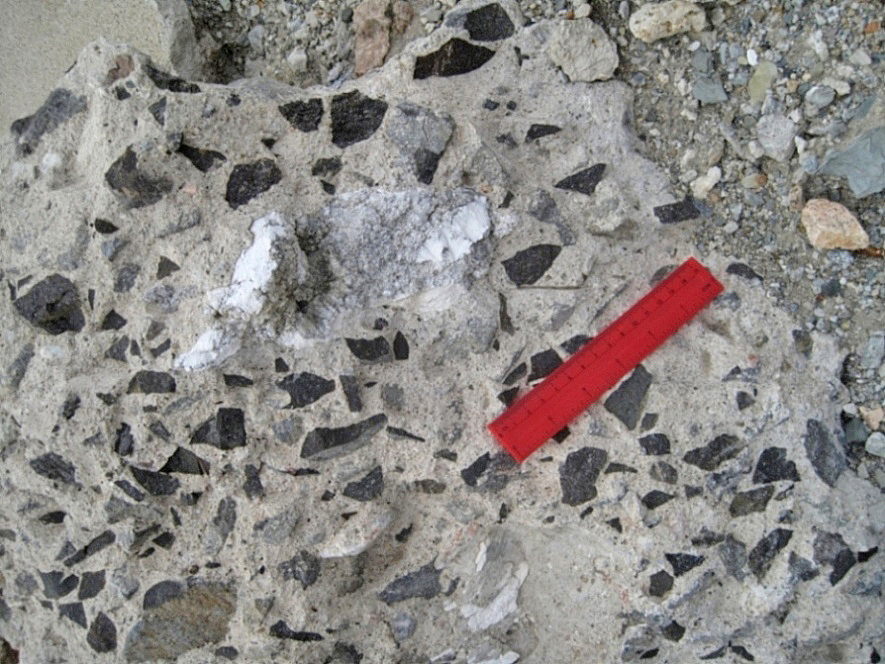
Howlite was used in the concrete at the mine. Examples showing this can still be found. (2/17/2016)
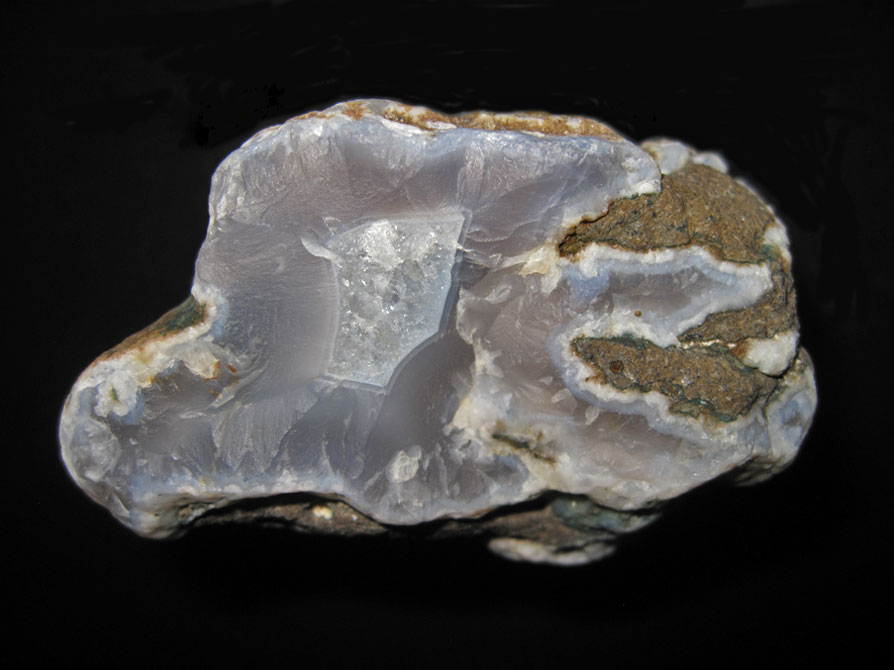
Agate from basalt flow. Agate is very hard to find now.

Unknown brown mineral

Probertite

Ulexite
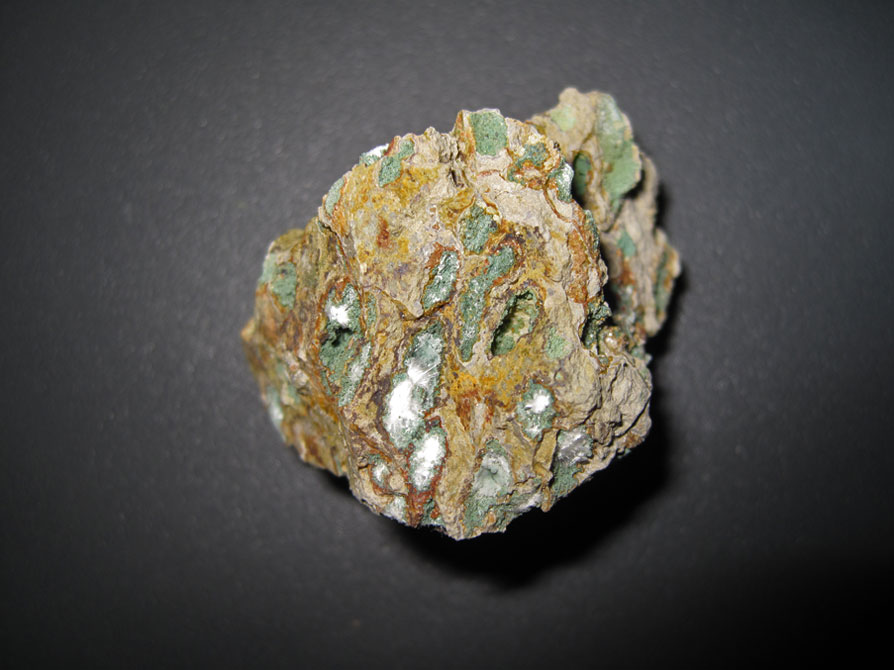
Zeolite minerals in basalt flow cavities
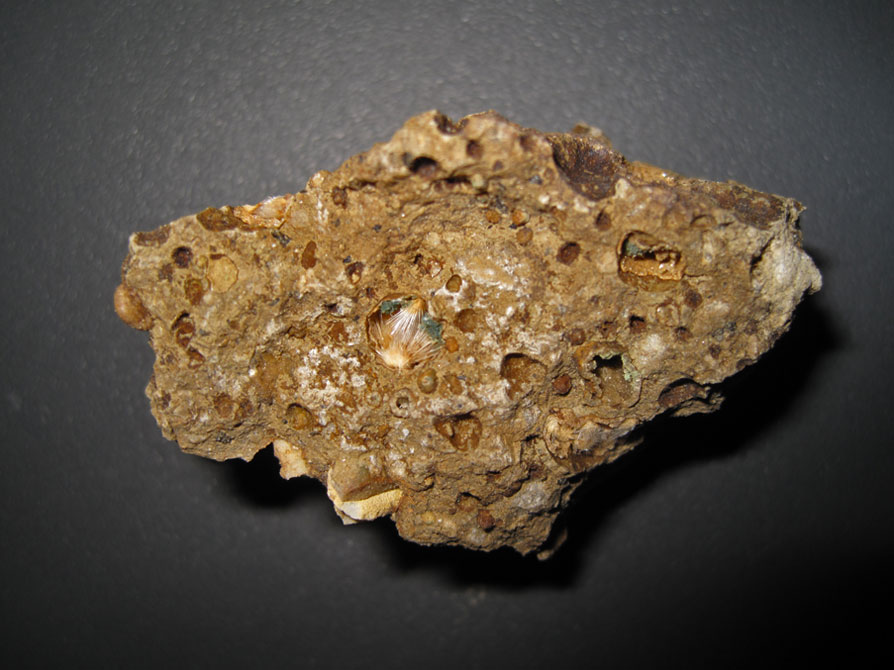
Minerals in basalt flow cavities. The delicate white "hair" in the larger cavity is natrolite.
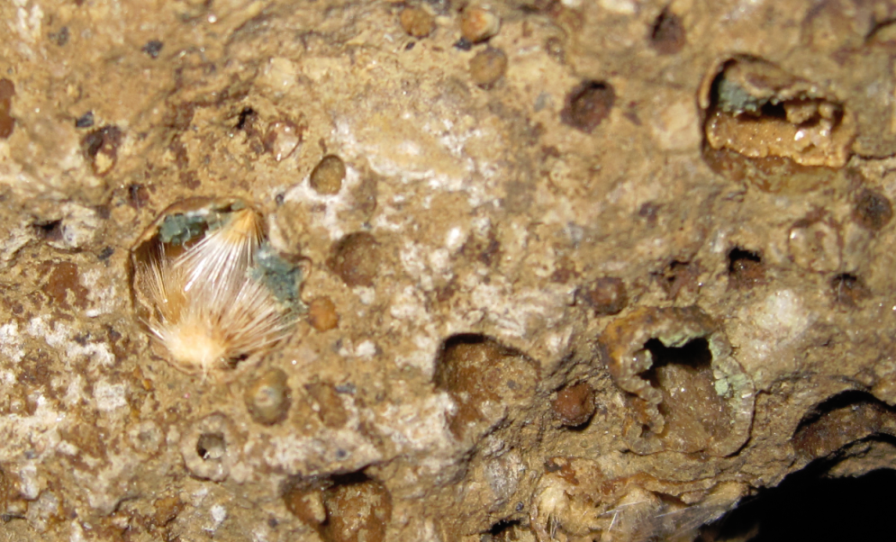
Close-up of natrolite in cavity.
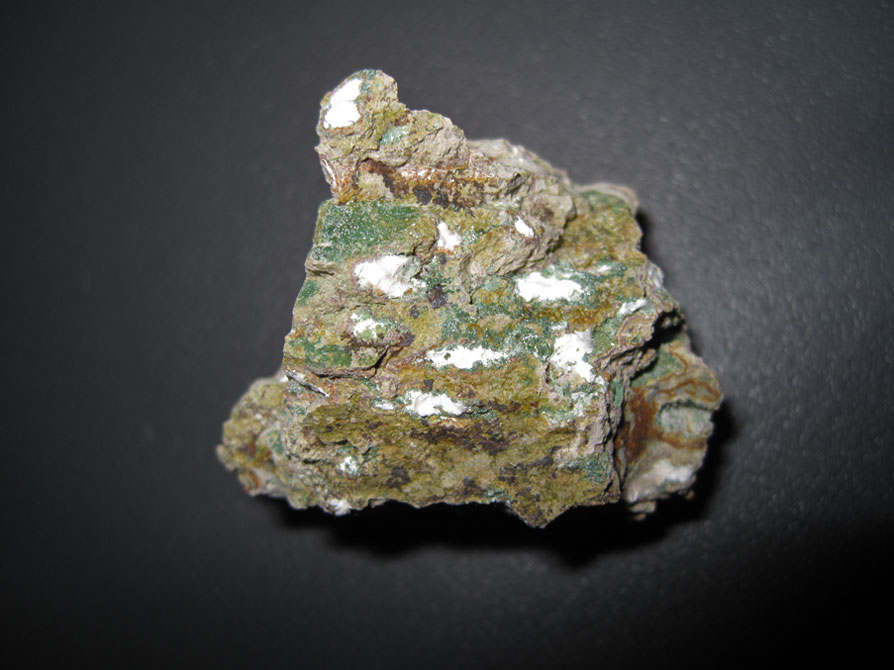
More minerals in the cavities maybe with probably snowy-white analcime
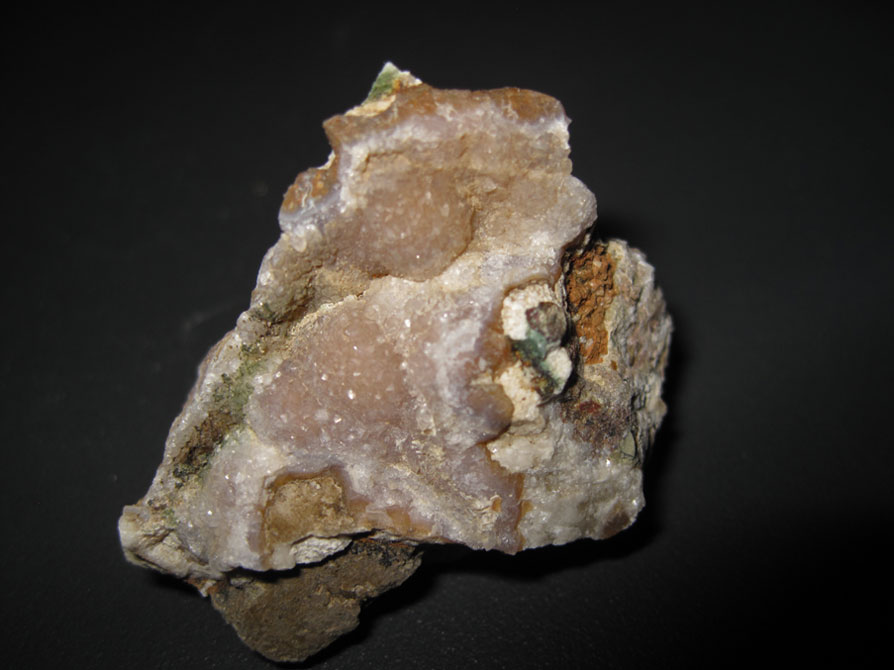
More crystals in the basalt cavities

A larger piece (6-inches wide) of basalt containing minerals
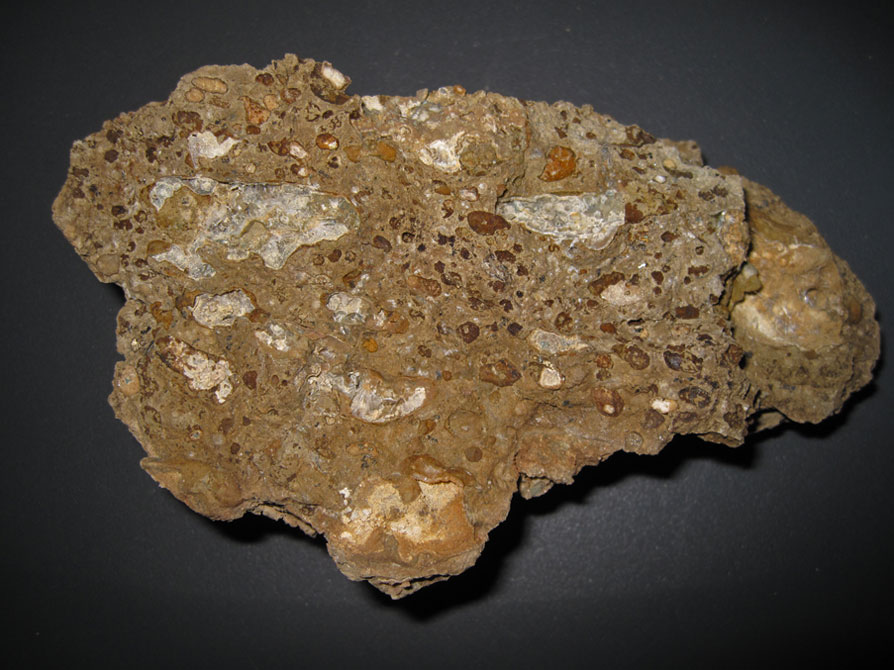
The other side of the previous basalt
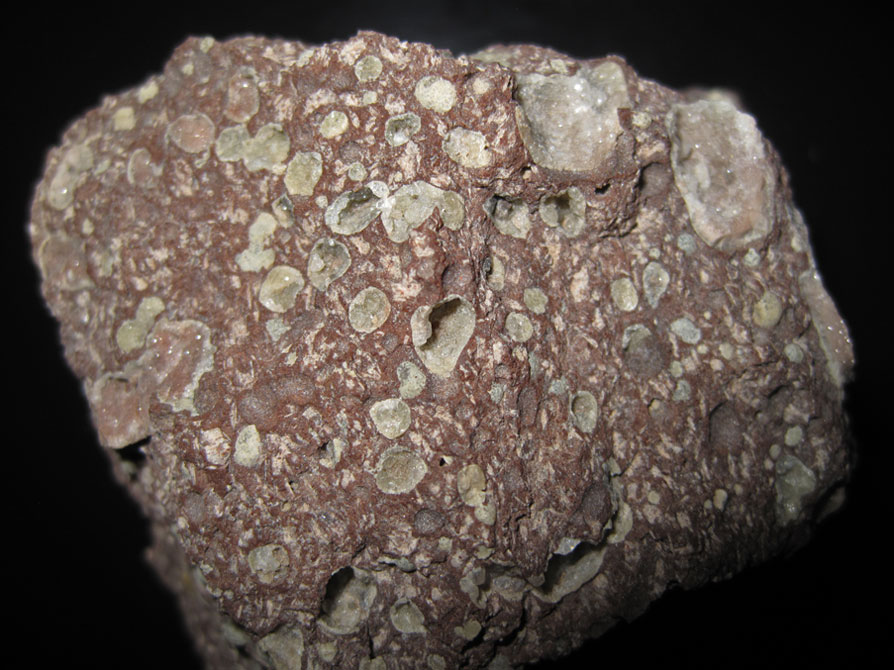
Still another basalt packed with mineralized cavities




































